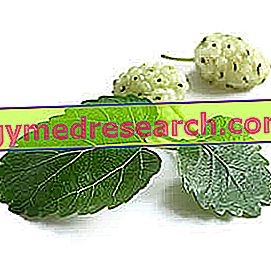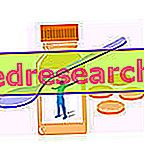
Scientific name
Morus alba L.
Family
Moraceae
Origin
Northern China
Synonyms
Gelso Bianco, Gelso comune, Moro Bianco
Used Parts
The drug consists of the buds, leaves, fruits and bark of the white mulberry root.
Chemical constituents
- Anthocyanosides (fruits);
- Flavonoids;
- Stilbenoid glucosides (mulberrosides);
- Substances with antimicrobial activity (kuwanon G);
- Tannins;
- Organic acids;
- Vitamins;
- Amino acids;
- Mineral salts.
Morus Alba in Herbalist: Property of the white Mulberry
Many properties are ascribed to Morus alba, among which we recall those antibacterial, antioxidant, astringent, diaphoretic, diuretic and hypotensive. However, most probably, the white mulberry owes its popularity to the marked hypoglycemic properties attributed to it.
It is no coincidence that various white mulberry-based food supplements are available on the market, which are used precisely as a remedy for controlling the metabolism of sugars.
Biological activity
As mentioned, a large range of properties is ascribed to Morus alba.
The antibacterial action attributed to this plant is attributable to a particular compound isolated from its root: the kuwanon G. Studies conducted in vitro have shown that this compound possesses a marked antibacterial activity, exercised above all against microorganisms responsible for the onset of caries and periodontitis, such as Streptococcus mutans, Streptococcus sobrinus, Streptococcus sanguis and Porphyromonas gingivalis .
Mulberrosides, on the other hand, have been shown to inhibit the activity of the tyrosinase enzyme, which plays a fundamental role in melanin synthesis. Through this inhibition, therefore, mulberrosides are able to exert a dermal clotting action, which makes them potentially useful agents in the treatment of skin disorders characterized by hyperpigmentation.
As for the hypoglycemic effect attributed to Morus alba, numerous studies have been conducted on this to evaluate its real effectiveness.
From these studies, conducted on animals, it emerged that the extracts of leaves of Morus alba are able not only to exert hypoglycemic action in diabetic rats, but are also capable of exerting an antioxidant action, thus allowing to reduce stress oxidative induced by the same diabetes.
The hypoglycemic and antioxidant properties are mainly due to the flavonoids and mulberrosides contained in the plant, but not only. In fact, a study has shown that even the anthocyanosides contained in the fruits of Morus alba have a certain hypoglycemic activity.
Finally, another interesting compound - albanol A - has been isolated from the bark of the Morus alba root, which has been shown to have anticancer properties. In fact, from in vitro studies, albanol A has been shown to induce apoptosis in human leukemia cell lines.
However, despite the encouraging results obtained so far, in-depth clinical studies are needed before being able to approve similar applications of Morus alba in the medical field, in such a way as to verify the real therapeutic efficacy and effective safety of use even on humans.
Morus Alba in folk medicine and homeopathy
In Chinese folk medicine, Morus alba is used for the treatment of various disorders, having different origins and nature.
More in detail, the bark of Morus alba is used in Chinese medicine for the treatment of diseases such as cough, dyspnea, fever, headache, edema and dry eye, as well as being used as a remedy to promote urination.
The fruit of Morus alba, on the other hand, is used in Chinese folk medicine for the treatment of diabetes and constipation, as well as being used as a remedy to counteract the early graying of hair.
As for homeopathic medicine, on the other hand, at the moment Morus alba finds no use in this area.
Contraindications
Avoid taking Morus alba and its preparations in case of proven hypersensitivity to one or more components.
Pharmacological Interactions
Although there are no data on possible drug interactions between preparations based on Morus alba and drugs of any kind, given the hypoglycemic properties of the plant, it is reasonable to think that taking it could interfere with any hypoglycemic therapies in course.
For this reason, before taking preparations based on Morus alba, it is always good to ask the advice of your doctor and inform him if you are taking medicines of any kind, including medicines without a prescription, homeopathic medicines and herbal products. .



